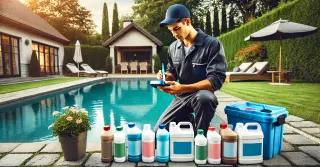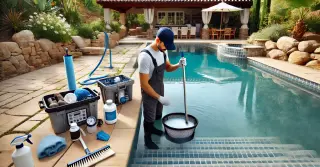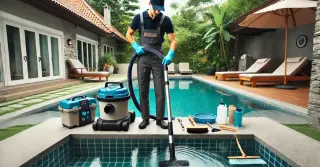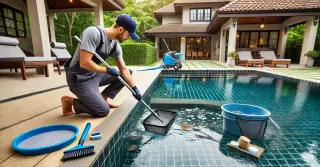Pool Chemical Balance Montvale NJ

Maintaining the proper chemical balance is essential for a safe and enjoyable swimming experience. Correct chemical levels stop algae and bacteria growth, keep the water clear and clean, and protect the pool's surface and equipment.
- Optimal pH Balance: The pH balance in your pool reflects its acidity or alkalinity. A balanced pH level should be between 7.2 and 7.6. Acidic water from low pH can irritate skin and corrode equipment. Alkaline water from high pH causes cloudiness and scaling. Frequent pH testing and adjustments is essential to maintain a comfortable and safe swimming environment.
- Managing Chlorine Concentration: Chlorine is essential for pool hygiene, destroying bacteria, algae, and other harmful pathogens. Optimal chlorine levels range from 1 to 3 ppm. Too little chlorine can lead to unsanitary conditions, allowing bacteria and algae to thrive. Excessive chlorine leads to skin and eye irritation and create a strong chlorine smell. Frequently checking and balancing chlorine levels maintains sanitation and comfort.
Balancing AlkalinityTotal alkalinity is another critical aspect of pool water chemistry. Alkalinity buffers pH levels, preventing drastic pH fluctuations. The optimal total alkalinity range is 80-120 ppm.
- Avoiding pH Fluctuations: Proper alkalinity levels help stabilize pH levels, preventing rapid changes that can cause skin irritation and damage to pool surfaces. Low alkalinity causes pH levels to fluctuate, making it difficult to maintain a consistent balance. If alkalinity is too high, it can make the water cloudy and lead to scaling. Frequent alkalinity testing and adjustments is essential for maintaining a stable and balanced pool.
- Managing Calcium Hardness: Calcium hardness refers to the amount of dissolved calcium in the pool water. Proper calcium hardness levels range from 200 to 400 ppm. If calcium levels are too low, the water becomes corrosive, damaging pool surfaces and equipment. If calcium levels are too high, it can cause scaling on pool surfaces and cloud the water. Frequent calcium hardness testing and adjustments is essential for pool protection and clear water.
Using Pool Chemicals SafelyUsing and storing pool chemicals safely is vital for safety and chemical performance. Chemicals should be stored in a cool, dry place, away from direct sunlight and out of reach of children and pets. Adhere to manufacturer guidelines for correct dosing and application.
- Measuring and Mixing Chemicals: Measuring pool chemicals accurately is crucial for maintaining balance. Inaccurate dosing can disrupt the chemical balance and affect water quality. Use a clean, dry measuring cup or scoop and never combine chemicals directly. If needed, mix chemicals in water as per instructions.
- Understanding Chemical Reactions: Certain chemicals can react dangerously if mixed. Never mix chlorine with acid, for example. Understanding these interactions prevents accidents and ensures safe handling. Store chemicals separately and handle each with care to avoid harmful reactions.
Maintaining the proper chemical balance in your pool is crucial for safety, cleanliness, and enjoyment. By consistently testing and adjusting pH, chlorine, alkalinity, and calcium, you maintain optimal water conditions.
Proper chemical use and storage improve the safety and longevity of your pool.




